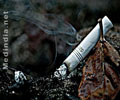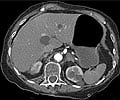If graphic warning labels similar to those introduced in Canada nearly a decade ago were imposed on cigarette packs in the US several million smokers would quit smoking, researchers suggest.

The researchers used statistical methods to compare smoking rates in the U.S. and Canada for a nine-year period before and after the graphic warning labels were introduced in Canada. The price of cigarettes were factored into the analyses.
The study found the "regulatory impact analysis" used by the U.S. Food and Drug Administration to gauge the effectiveness of Canada's graphic warning labels to be inaccurate.
The FDA had estimated only a 0.088 percentage point reduction in smoking rates after graphic warning labels were mandated in Canada.
Jidong Huang, research specialist at UIC's Institute for Health Research and Policy and lead author of the new study, said when he and his collaborators corrected the FDA's methodological flaws and took into account the purchase prices paid by smokers, they found that graphic warning labels reduce cigarette-smoking prevalence at much higher rates.
Graphic warning labels on cigarette packages have been implemented in more than 40 countries, but not in the US.
Advertisement
However, the tobacco industry challenged the FDA's requirement for graphic warning labels, and a US Court of Appeals ruled that the federal agency lacked evidence that graphic warning images would reduce the number of Americans who smoke.
Advertisement
The UIC and University of Waterloo researchers hope the new study will provide support for a revised FDA proposal to require graphic warnings.
The findings are published online in the journal Tobacco Control.
Source-ANI















